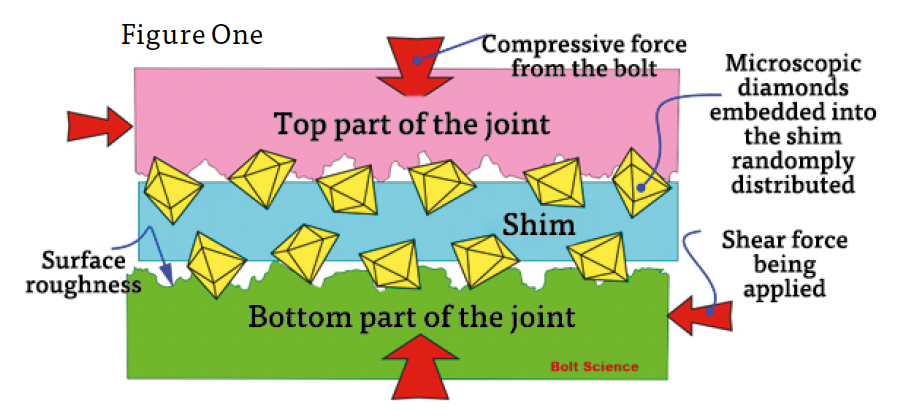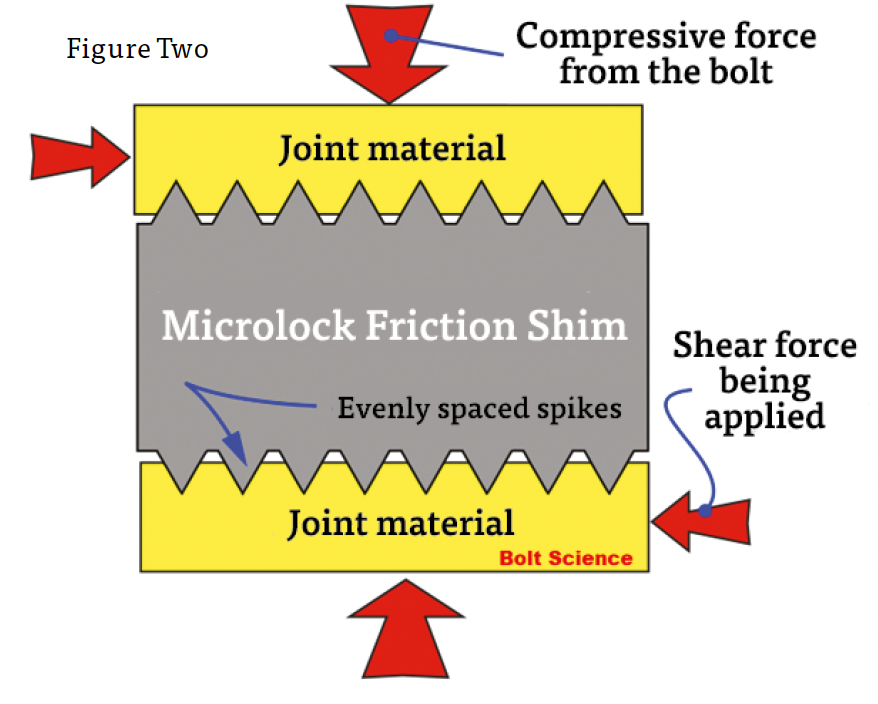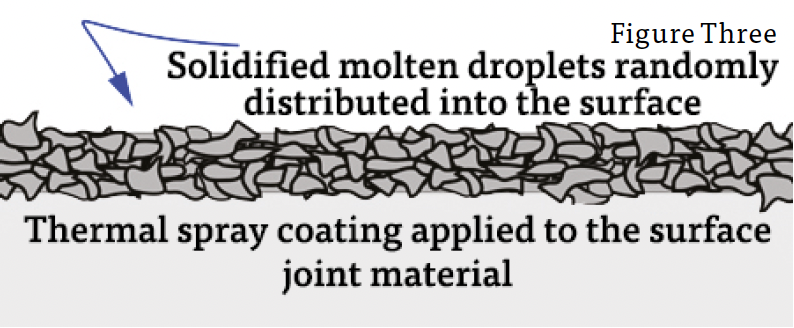
In the January - February issue of Fastener + Fixing Magazine, Dr Bill Eccles of Bolt Science Ltd discussed the importance of the value of interface friction in friction grip joints. In this follow up article, he highlights how having a proven approach to increase interface friction is very useful, with it being a way of resolving a service problem or minimising the bolt size needed in a shear loaded application.
Some proven approaches of this include the use of diamond impregnated friction shims, using friction shims with an engineered surface, or using a thermal spray coating on the plate surfaces. An advantage of increasing the coefficient of static friction in shear loaded joints is that they can allow a larger design margin to be achieved, or alternatively, allow the use of smaller bolts.
The use of friction shims in friction grip joints
Friction shims, also known as anti-slip shims, are thin metal or composite materials inserted between two surfaces in a joint to increase friction and improve grip. They increase the coefficient of static friction between the two surfaces that they are placed between, reducing the tendency of the surfaces to slide over each other under load.
Friction shims increase the friction between the surfaces usually through a combination of surface roughness and material properties. Typically, friction shims are made from materials such as stainless steel, titanium, or specially coated composites. The surface of the shim is often textured or coated with a friction enhancing material, to maximise grip.
When a load is applied to the joint, the friction shim provides additional resistance to joint slip when a shear load is applied. Fatigue and bolt loosening issues have been resolved by the placement of a friction shim in the joint. Bolt bending fatigue failures frequently being the result of joint slip as is self-loosening.
Diamond coated shims are available from a number of suppliers, most notably 3M and ATELA. These shims consist of a thin steel sheet with an electroless nickel coating having microscopic diamonds embedded – the size of the diamonds are such that they are not visible to the naked eye. The shim is placed on the joint interface on the shear plane so that the diamonds bite into both surfaces when the clamp force from tightening the bolts is applied, as illustrated in Figure One above.
In a press release in September 2024, 3M announced that it had sold more than 300 million friction shims worldwide. The coefficient of static friction provided by such shims depends upon the diamond grain size; the contact pressure; and the material pairing involved. Based upon information on the 3M website, the coefficient of static friction when such shims is typically of the order of 0.7, but varies depending upon the material, diamond grain size and surface roughness.
The size of the diamonds needs to be such that they will bite into the joint material when the surface roughness is considered. That is, the diamonds being larger than the gaps between the surface asperities. Hence, the rougher the surface, generally the larger the diamond grains need to be. The contact pressure typically needs to be a minimum of 50 MPa so that the diamonds will dig into the surface. Due to surface pressure limitations, diamond friction shims tend to cover the complete joint interface, such a shim is illustrated in Figure Two below.
 Recently a new product has entered the friction shim market. MicroLock disks, from TRD Surfaces, have microscopic asperities created by the impact craters from a laser producing holes in the shim surface, in the order of 180 per square mm.
Recently a new product has entered the friction shim market. MicroLock disks, from TRD Surfaces, have microscopic asperities created by the impact craters from a laser producing holes in the shim surface, in the order of 180 per square mm.
The surface topology is tightly controlled so that the shim can be engineered for specific applications. The spike sharpness and depth can be adjusted to cater for different surface pressures and materials. Because of the controlled surface topology, a higher and more consistent coefficient of static friction is claimed. That is, values between 0.9 to 1.1, which is an improvement on other approaches. Since the method can also sustain high surface pressures, the shim can be in the form of washers covering the pressure cone formed when the bolt is tightened.
Obviously, use of a friction shim adds cost to an assembly, however they can be extremely useful in reducing the bolt size/strength needed in a shear loaded application, or in resolving a service problem. The addition of a friction shim will increase the number of surfaces within a joint, this together with the surface topology used will increase the amount of embedding. The increase in the friction value and the drop in the magnitude of the clamp force needed to prevent slip that this allows, usually more than compensates for such loss.
Another way to increase interface friction is through both deposited and thermal spray coatings. A hard ceramic coating can be deposited onto a part that increases the coefficient of static friction. There are a few ways in which this can be completed such as, at ambient temperature, particles at high-speed – carried in a gas – can be bombarded onto a material surface to form a thin dense film of aluminium oxide, or other hard ceramic. Such a process can be applied to a shim that is fitted between the joint interface that substantially increases the interface friction. 
A more common way is by thermal spray coating, which involves spraying molten or semi-molten materials onto a surface to create a coating that improves friction and wear resistance (Figure Three). The process is analogous to spray painting, but the spray is droplets of molten metal. Metal or ceramic material are heated and then sprayed onto the grit blasted and cleaned metal surface using an electric arc or a high velocity jet of gas. The molten material is flattened on impact with a dense, hard coating being created. The molten droplets randomly form over each other and bind to the cleaned metal surface. The coating thickness being of the order of 0.1mm to 0.3mm.
The coating can be adjusted to have specific properties, such as increased roughness or hardness. One of the advantages of this method is that it is a cost-effective way to increase the coefficient of static friction typically achieving a value usually above 0.5mm.
For a specific application, a test is needed to determine what value of friction is being achieved. From our experience in mechanical engineering applications, the use of friction shims is more common than spray coating as a way to increase friction.

Becca is the latest member to join our team and is eager to get stuck into the world of fasteners. She brings an enthusiastic and fresh outlook on what we do editorially and will be leading our social media activity – including sourcing material, editing articles and posting online.





